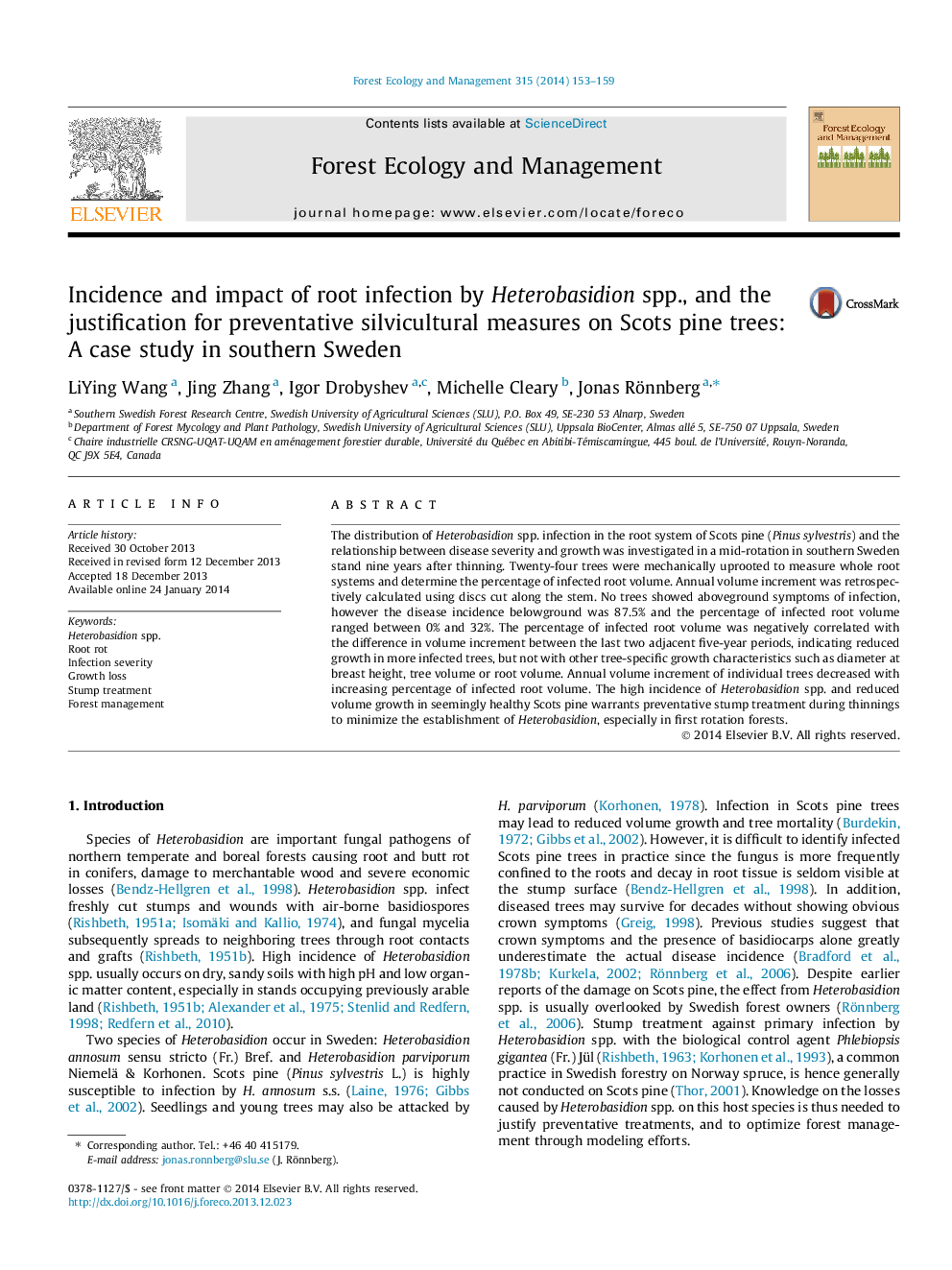| Article ID | Journal | Published Year | Pages | File Type |
|---|---|---|---|---|
| 86722 | Forest Ecology and Management | 2014 | 7 Pages |
•Trees were uprooted to investigate the impact of Heterobasidion on tree growth.•Despite no aboveground symptoms, up to 32% of root volume was infected.•Aboveground tree characteristics are not reliable disease indicators.•Annual volume increment decreased with increasing root volume infection.•Stump treatment or winter thinning are recommended to minimize losses.
The distribution of Heterobasidion spp. infection in the root system of Scots pine (Pinus sylvestris) and the relationship between disease severity and growth was investigated in a mid-rotation in southern Sweden stand nine years after thinning. Twenty-four trees were mechanically uprooted to measure whole root systems and determine the percentage of infected root volume. Annual volume increment was retrospectively calculated using discs cut along the stem. No trees showed aboveground symptoms of infection, however the disease incidence belowground was 87.5% and the percentage of infected root volume ranged between 0% and 32%. The percentage of infected root volume was negatively correlated with the difference in volume increment between the last two adjacent five-year periods, indicating reduced growth in more infected trees, but not with other tree-specific growth characteristics such as diameter at breast height, tree volume or root volume. Annual volume increment of individual trees decreased with increasing percentage of infected root volume. The high incidence of Heterobasidion spp. and reduced volume growth in seemingly healthy Scots pine warrants preventative stump treatment during thinnings to minimize the establishment of Heterobasidion, especially in first rotation forests.
